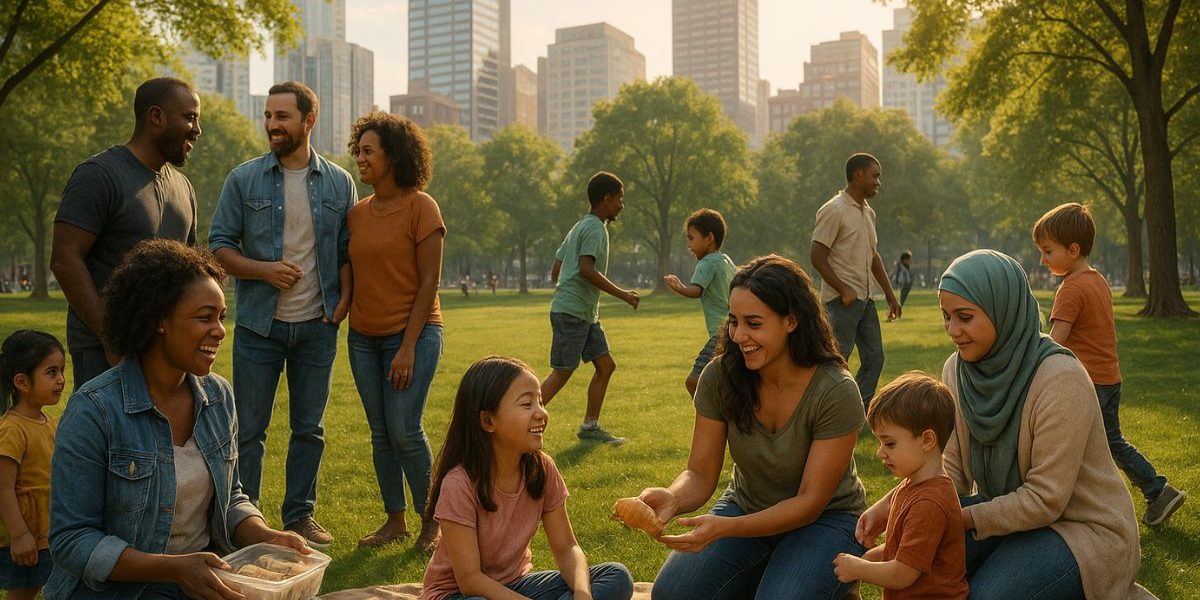When people move to a new country, the journey doesn’t stop at crossing the border. What follows is a much longer path—building a life, connecting with others, and becoming part of a new community. Social integration is where immigration policy meets everyday experience. It’s how individuals and families move from being outsiders to feeling at home.
This process matters for everyone involved. When newcomers are welcomed and supported, they’re more likely to contribute to their new country in meaningful ways. At the same time, social cohesion grows stronger when residents feel that newcomers share a commitment to shared values and responsibilities. Finding the balance is not always easy, but it is necessary.
What This Article Covers About Social Integration
This post explores the connection between immigration and social integration through several key points:
- What social integration looks like in daily life
- The challenges that prevent newcomers from connecting
- How local communities and public services play a role
- Why language, jobs, and civic participation matter
- What research shows about long-term outcomes
The goal is to bring more clarity to a topic that often gets lost in larger immigration debates.
Understanding What Integration Means
Social integration is more than just living in the same place. It means building trust, having shared spaces, and creating relationships across cultural lines. For immigrants, it can involve learning a new language, adapting to social norms, and finding ways to participate in everyday life—from going to school to voting in local elections.
Integration is not about abandoning identity. It’s about finding common ground without losing personal history. Communities benefit when people can maintain their roots while also growing into their new surroundings.
Successful integration supports both personal well-being and broader social stability. When people feel they belong, they are more likely to work, volunteer, and raise families that thrive.
Barriers That Slow Down the Process
Even with the best intentions, integration doesn’t happen overnight. Newcomers face a range of barriers—some visible, others more subtle. Language is often the first hurdle. Without strong language skills, it’s hard to find work, talk with neighbors, or help kids with homework.
Economic pressure is another major factor. If people struggle to find stable jobs or access services, they may feel excluded or discouraged. Legal uncertainty, especially for those with temporary status, can also prevent people from fully participating in public life.
Social isolation is a real concern. Without personal connections, it’s hard to understand cultural expectations or feel truly welcome. This can affect mental health, confidence, and trust in institutions.
The Role of Local Communities
Much of social integration happens at the local level. Schools, libraries, churches, and neighborhood centers often serve as first points of contact. These places offer more than services—they offer relationships. A friendly teacher, a helpful neighbor, or a patient coworker can make all the difference.
Programs that support integration don’t need to be complex. Language classes, job training, and cultural exchange events are all effective when done with care. The most successful efforts come from communities that listen to both newcomers and long-time residents.
Volunteering also plays a big role. When people work together toward a common goal, barriers break down naturally. Whether it’s a community cleanup or a shared meal, small acts can lead to strong connections.
Why Language and Employment Are Key
Language and employment are two of the strongest anchors in the integration process. Language opens the door to relationships, information, and public participation. Without it, even simple tasks can feel like major challenges.
Employment builds financial stability and a sense of purpose. It also encourages routine, responsibility, and contact with others. When immigrants are included in the workforce, the benefits extend far beyond individual families.
Barriers in these areas can hold people back for years. That’s why early support—like job placement help, vocational training, and language instruction—is so important.
Civic Life and Belonging
Feeling part of a country also involves having a voice. Voting, attending town halls, joining school boards, or simply being informed about local issues helps people feel invested. But civic engagement can be intimidating for newcomers unfamiliar with how the system works.
Offering simple resources in multiple languages or hosting welcome events can help bridge this gap. Over time, civic involvement strengthens democracy by bringing in new perspectives and ensuring that all residents, regardless of origin, feel seen.
It’s also about respect. When communities make space for different cultures and experiences, it sends a clear message: you are part of this.
Research and Long-Term Outcomes
Studies show that well-integrated immigrants tend to do better over time. Their children are more likely to graduate, their families earn more, and their neighborhoods experience lower crime and higher rates of volunteerism. These trends hold true across many countries and types of migration.
Integration also reduces tensions. When people live and work together, they develop trust. That trust makes it harder for fear or division to take hold.
It’s not always easy, and progress can be uneven. But the long-term outcomes show that investing in integration pays off—not just for immigrants, but for the broader society.
Making Space for Everyone
Social integration doesn’t require big headlines or sweeping policies. It starts with conversations, shared meals, fair hiring, and public spaces where everyone feels welcome. It grows when people choose connection over fear and build routines around common values.
Immigration will continue to shape communities across the country. The question is not whether people will arrive, but how we’ll choose to live together once they do. Integration is the path that turns strangers into neighbors—and communities into something stronger than the sum of their parts.
